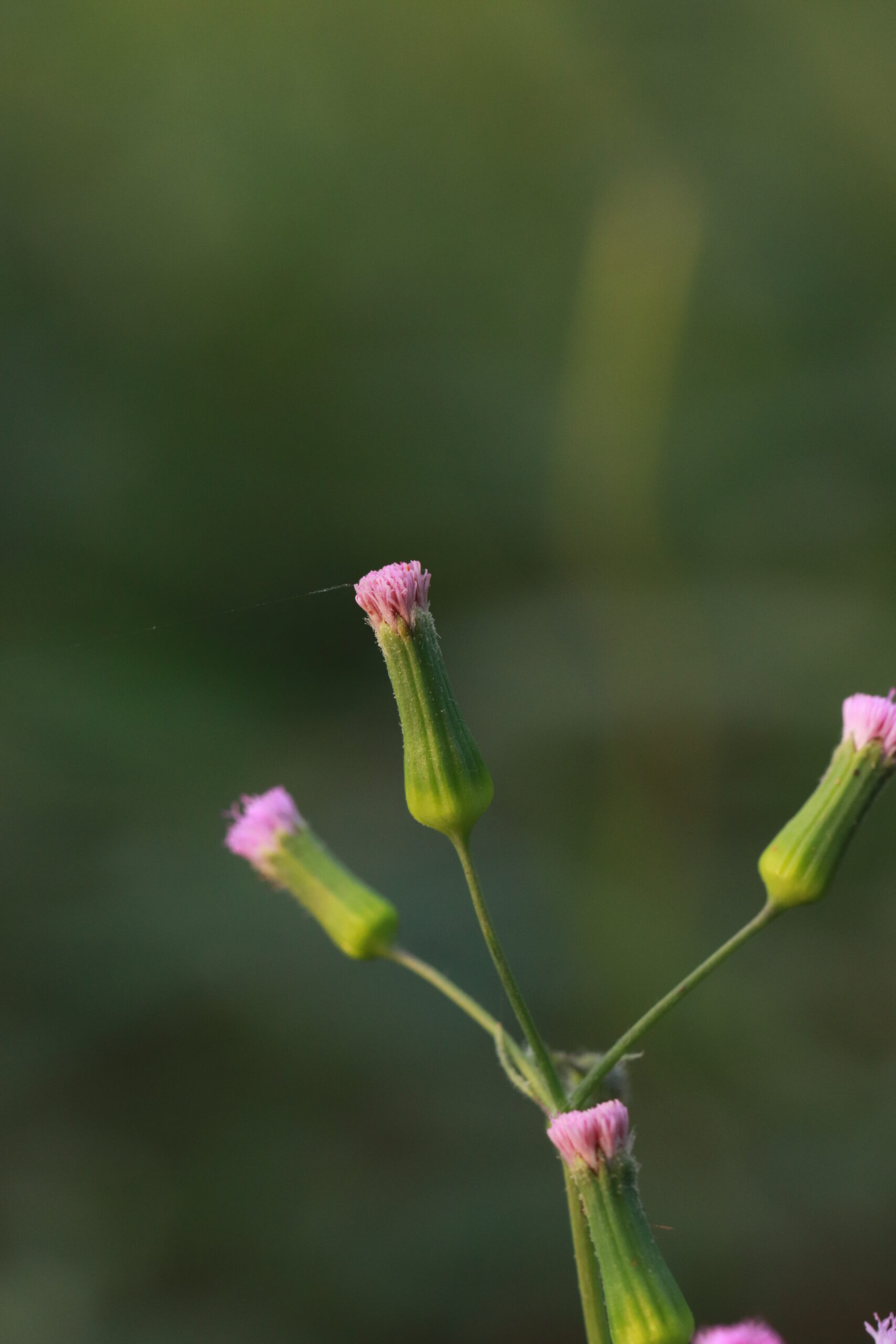Of the many plants I have photographed, the vast majority have been within a few metres of a road, or at least a trail or path of some sort. I am almost always close enough for traffic noise to come through. It is truly amazing how much diversity survives, persists, and sometimes even thrives within a few metres of humanity. Some of what I find is to be expected—human influence on the plants of a region are many and some run deep. If I am in the Western Ghats and there is an open flowing drain, there are sure to be monsoon ephemerals growing throughout the year. Many ephemeral species are ephemeral only because of climactic constraints—usually in this case it is too dry for them to grow year-round. Provide them running water all through the year when streams and waterfalls have run dry, and they shall happily bloom aseasonally. How human activity changes phenology —the seasonal patterns of flowering, fruiting, and growing—in plants is actively being researched. What effects lie downstream? We do not fully understand yet. In some species, this leads to a mismatch between plants and the organisms living off them. Bloom in the off-season and your pollinators may not be there yet. Or maybe the caterpillars that feed off you.

Heteropogon triticeus, a perennial grass on Vetal Tekdi in the post-monsoon dry season
On the other hand, if I am walking through a village in Konkan, there are sure to be ancient mango trees around. Although introduced to the Western Coastal Plains several hundred years ago (such long timescales make this an introduction at evolutionary timescales), these trees would almost always have been planted, perhaps in pre-independence India. What is less expected are the orchids hanging off them. Even though epiphytic orchids use their host trees only for mechanical support, they do indeed prefer some host trees over others. It is not surprising that a tree native to the region is able to host a variety of epiphytes, which might have co-evolved. Would a mango tree outside its native range, say, in Delhi, be able to perform the same ecological roles? No. But what is most surprising is that the orchids have been allowed to hang on, undisturbed, for the decades it would have taken them to grow as big as they are. The mango trees in the newer orchards, where trees are pruned and planted in rows, are often bare. Is this because of just age? I do not know.
Of course, because I am this close to human activity, the many introduced and invasive species brought over in the past few hundred years are often the most abundant species I encounter. One learns to look past them while looking for the odd native species peeking through. But even deep off-trail in the Western Ghats, they often predominate. Such species often thrive in disturbed habitats—disturbed either by (over) grazing, mechanical removal, mowing, footfall, or even fire—but alongside them thrive the native species evolved to thrive in these regions as well. Examples of the Maharashtrian Ghats’ native ruderal species would be Emilia sonchifolia or a Blumea species.

Emilia sonchifolia, a common ruderal growing out of a footpath in Pune
What is more surprising is that even if disturbed in other ways, not disturbing the soil itself preserves remarkable amounts of diversity. Several plant species are perennials, persisting dormant underground for most of the year. Even though heavily disturbed by foot traffic, in Pune’s Vetal Tekdi I have run into several such species, ranging from the bulbous Ledebouria revoluta to several perennial kinds of grass. These plants are examples of Maharashtra’s open natural ecosystems, which are severely threatened today. Missing are these often-endemic species on the lower slopes of the Tekdi, which have been planted over with trees not native to the region. Ruderals, largely annual (both native and non-native, but mostly the latter) thrive in their understorey. But given the human disturbance present today, are these populations able to propagate, or are they relict populations persisting from when the ecosystem was pristine? Once again, I do not know.

Ledebouria revoluta, a bulbous geophyte emerging after the first monsoon rains on Vetal Tekdi
As I started off by saying, it is indeed surprising how much diversity persists. What is less surprising (but more disheartening) is that we do not know how much longer it will, for the effects of the Anthropocene run deep, and can take decades, if not centuries to reverse or smooth over. Until then, I photograph plants, as they are and how they are today.
Photo by Vikram Iyer
About the author: Vikram Iyer is a BS-MS (2024) alumnus from IISER Pune. He runs an Instagram page called @thefloraofindia with each post on one unique plant from the flora of India.





